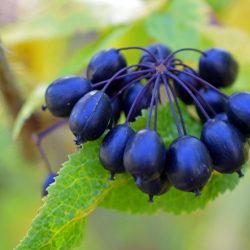Lapacho is a tree native to South America, revered for its bark, which is used in traditional medicine. It is renowned for its curative and regenerative properties. But what exactly are the benefits of lapacho? That’s what we’re going to find out together in this full, detailed article.
The history of Lapacho
Lapacho, with its rich and fascinating history, is much more than just a tree. Its presence in South America dates back thousands of years, and its use is deeply rooted in the medicinal traditions of many cultures. In this section, we take a step back in time to discover the “History of Lapacho”, a journey that will take us from ancient times to the present day.
The origins of Lapacho
Lapacho, also known as Tabebuia, has been used by the indigenous civilisations of South America for thousands of years. Its use in traditional medicine is well documented, particularly in the treatment of skin diseases, respiratory infections and digestive disorders.
Lapacho in traditional medicine
Lapacho has long been used as a natural remedy. Its popularity as a medicinal plant is linked to its bioactive compounds. Its bark is generally used to prepare decoctions or infusions.
The benefits of Lapacho
Lapacho, an often underestimated treasure of nature, has a wealth of benefits for our health and well-being. In this section, we take an in-depth look at the benefits and healing properties of this incredible plant. Prepare to be amazed by “The Benefits of Lapacho”.
Antioxidant properties
Lapacho, a true treasure of nature, is rich in antioxidant compounds. But what does this mean, and how does it benefit our health? Let’s get to the heart of the matter.
Firstly, antioxidants are molecules that protect our cells against free radicals. Free radicals are unstable particles produced by our bodies during various metabolic processes, or in response to environmental factors such as exposure to sunlight or pollution. If their concentration becomes too high, this can lead to ‘oxidative stress‘, linked to a range of health problems, from premature ageing to chronic diseases.
Lapacho is particularly rich in quinones and flavonoids, two powerful antioxidants. Quinones play a crucial role in protecting our bodies from oxidative damage. They also help to regulate inflammation and are being studied for their anti-cancer potential.
Flavonoids, on the other hand, are known for their ability to modulate the activity of various enzymes and immune system cells. As a result, they can help reduce inflammation, improve cardiovascular health and boost resistance to infection.
Thanks to its antioxidant content, lapacho is an invaluable ally for our health. By helping to fight free radicals and prevent cell oxidation, lapacho can help us keep our bodies healthy, boost our immune system and protect our skin from the signs of ageing. All thanks to the power of its antioxidants.
Immune support
Lapacho bark contains compounds that can boost the immune system, which can help fight infection and strengthen the body’s resistance.
Uses of Lapacho
The Lapacho tree is as mysterious as it is versatile, and has many uses. Whether it’s in our diet, in the field of health or even in cosmetics, Lapacho is a true wonder of nature. In this section, we’ll be looking at the different “Uses of Lapacho” and how this amazing plant can enrich our daily lives.
Use in cooking
Lapacho can be used in cooking, as a tea or infusion. Its benefits are then poured into your cup, providing not only a pleasant taste, but also a deep sense of well-being.
Medical use
Lapacho is used in phytotherapy for its curative properties. It is also used in cosmetology for its regenerating and soothing properties on the skin.
Canine leishmaniasis
Lapacho, also known as Pau d’Arco, is a type of plant native to Central and South America. Traditionally, this plant has been used in folk medicine in these regions for a variety of illnesses. However, it is important to note that scientific research into its benefits remains limited.
Leishmaniasis is an infectious disease transmitted by sandflies, a type of small mosquito. In dogs, it can cause a variety of symptoms ranging from anaemia and weight loss to skin problems and kidney disorders. In severe cases, it can even be fatal.
As for the link between lapacho and leishmaniasis in dogs, some sources suggest that Pau d’Arco may have anti-parasitic effects that could be beneficial against leishmaniasis. However, the scientific evidence to support this claim is limited. Furthermore, the dosage and administration of lapacho for a dog suffering from leishmaniasis should be supervised by a vet, as incorrect use may cause undesirable side effects.
It is important to consult a vet for a proper diagnosis and appropriate treatment if a dog is showing symptoms of leishmaniasis. Whilst lapacho can be used as an adjunct to appropriate medical treatment, it should not be used as a substitute for professional veterinary treatment.
Precautions for use
Despite its many benefits, lapacho should be used with caution. It is advisable to consult a health professional before starting a course of treatment.
FAQs
- What is lapacho? Lapacho is a tree native to South America, renowned for its bark, which is used in traditional medicine.
- What are the benefits of lapacho? It is rich in antioxidants, supports the immune system and is used in traditional medicine and cooking.
- How is lapacho used? Its bark can be used to make infusions and decoctions, or in cosmetics.
- Does lapacho have any side effects? It is advisable to consult a health professional before starting a course of treatment.
- Where can I find lapacho? It is available in health food shops, online and in some pharmacies.
- Is lapacho scientifically recognised? Research has been carried out into its benefits, but more research is needed to fully confirm its effects.
Conclusion
Lapacho is a fascinating plant, with an ancient history and a multitude of potential benefits. If you’re looking for a natural remedy or an exotic ingredient for your cooking, you should discover lapacho.







